
Intro
This project is all about Super Capacitors, specifically Cornell Dubilier super capacitors. My name is Doug and I am going on an adventure experimenting with super capacitors. I will delve into what super capacitor technology is and what is the magic behind the scenes and then explore how these incredible devices can be used in practical applications. Before I can properly design applications I need to explore and measure their performance. I have several capacitance meters but none of them will do a good job of measuring a super capacitor, so in this project I will also design and build a meter capable of measuring super capacitor capacitance and equivalent series resistance (ESR).
I do not like using batteries in my designs so the applications I intend to explore in this project involve systems where a super capacitor can successfully replace a battery.
Here is a brief video explaining what I will try to design and build:
The Plan
The project plan includes a technology discussion as well as the design and fabrication of six systems. Four of these systems have remote wireless subsystems, so there are actually ten builds involved altogether. Fortunately several of them can use very similar electronics, which should reduce the amount of design work. This blog will include a brief discussion of the amazing technology found in super capacitors and it will introduce each of the six systems that will be built.
Super Capacitor Technology
The magic of supercapacitors is that they use activated carbon for their electrodes which creates electrodes that have thousands of square meters of surface area per gram of electrode. By soaking the electrodes and the separator material between electrodes in electrolyte they effectively reduce separation between electrodes to a microscopic distance. Since capacitance is proportional to the surface area and inversely proportional to the separation between electrodes, this creates capacitors with very high values of capacitance.
Electro-Chemical Double Layer Capacitor (EDLC) - Supercapacitor Concept
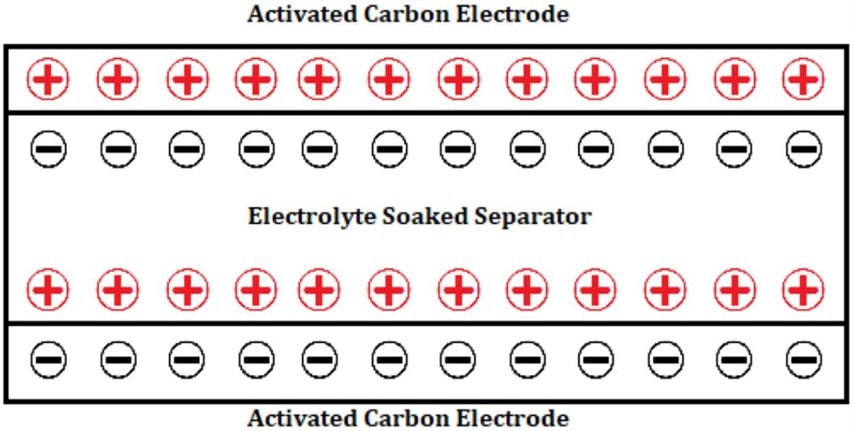
The double layer terminology refers to the 2 boundary layers, one formed between each electrode and the electrolyte. Although the electrolyte forms an insulator between electrodes, when the voltage reaches the decomposition threshold of the electrolyte it will start to conduct. This often makes the safe operating voltage of supercapacitors around 2.7 volts. Supercapacitor power systems need to ensure the capacitor voltage does not exceed the safe operating voltage. When supercapacitors are used in series to increase the output voltage, each capacitor must be protected. This is not difficult, but it is a feature of supercapacitor systems.
A twist on this technology is to dope one of the electrodes with Lithium to make a Lithium ion capacitor (LiC). This technology has lower leakage and a higher breakdown voltage than normal double layer supercapacitors.
Because of the micro-porous nature of the electrodes it can take extra time for ions in the electrolyte to reach all the crevices. This makes measurement of capacitance tricky and it also means leakage isn't constant.
Cornell Dubilier makes double layer supercapacitors ranging from 0.5 Farads to 600 Farads with ratings up to 3 volts and Lithium Ion (LiC) supercapacitors ranging from 10 F to 22F at ratings up to 3.8V.
They even make a line of DSF supercapacitors that can operate up to 6 V. And they make supercapacitor modules that can operate up to 30 V.
Applications of Supercapacitors
Some of the applications where supercapacitors excel are:
- Supercapacitors are more efficient at supplying pulse power than batteries
- Supercapacitors are great at supplying bridge power to tide systems over during temporary power interruption
- Supercapacitors are well suited as a main power source in applications where the load is high for short periods and there is time between high load periods to charge the capacitor from a low power source or even a power scavenging source
- Supercapacitors can be used to sustain memory through power shutdown periods
There is a link below for more in-depth technical information.
The Measurement Phase
Supercapacitor Measurement Technique
There is a reason why normal capacitance meters cannot measure supercapacitors - it takes time for supercapacitors to reach their potential, in more ways than one. There is a procedure for measuring supercapacitors that goes like this:
- Charge capacitor for 30 minutes at rated voltage
- Discharge capacitor through a constant current load
- Discharge rate to be 1mA/F
- Measure voltage drop between V1 to V2
- Measure time for capacitor to discharge from V1 to V2
- Calculate the capacitance using the following equation:
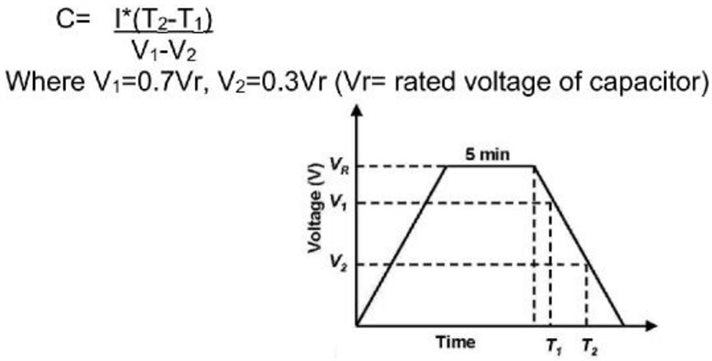
Where C= capacitance in Farads
I = discharge current
V= rated voltage
V1= 80% of rated voltage
V2= 40% of rated voltage
T1= starting time of test
T2= time to reach V2
I'm not sure how the discharge rate can be determined if the capacitance is not known, but it could be determined by iterating. One thing about this process is that it is not quick.
The SuperCap Magic Meter
The supercapacitor meter I am designing will try to do something like the above, but it will also have other modes of operation that use more traditional constant current charging cycles and maybe even a coulomb counting mode.
The brains of the Magic Meter will be an Arduino Uno R4 Minima because it has a 14 bit A/D converter. One mode of operation will be a simple voltmeter where several hundred 14 bit samples are averaged to provide high resolution voltage readings.
In addition to capacitance and voltage, the Magic Meter will also attempt to measure equivalent series resistance (ESR). This parameter is different for supercapacitors than other capacitors and even the different supercapacitor technologies have different ESR characteristics.
I'm not sure if this meter will be used for measuring leakage yet, I first want to check that with traditional instrumentation.
Here is a preliminary look at the case design for the Magic Meter:
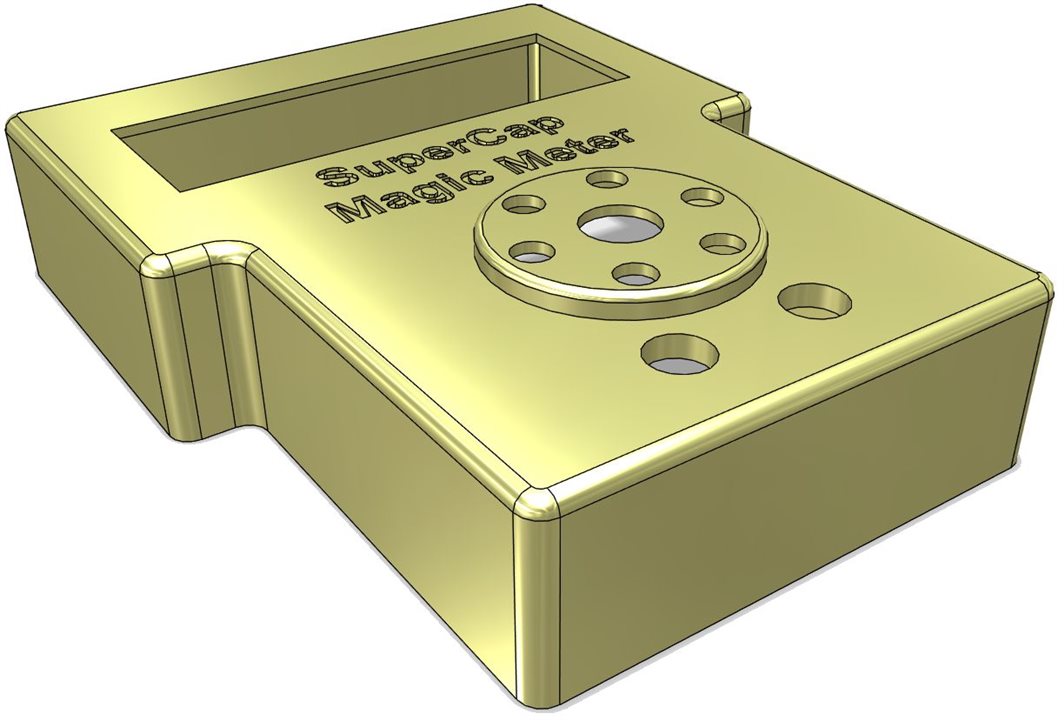
The Applications Phase
The Entergate Affair
The Entergate system will notify us when someone opens the gate beside our house. Here is a picture of the gate:
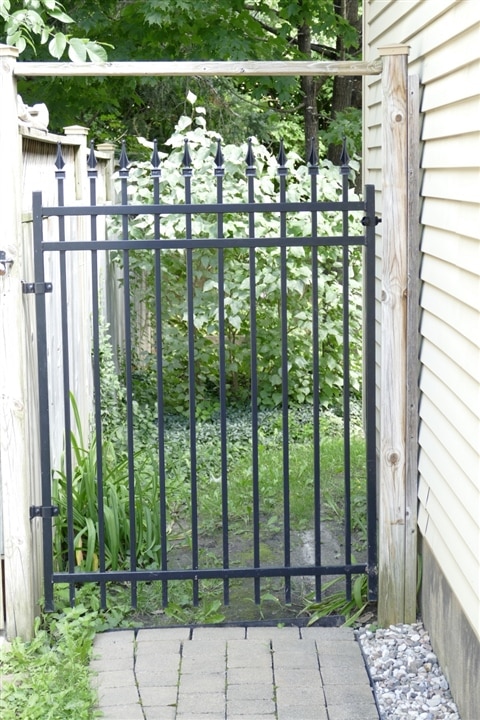
The Gate Monitor
The gate monitor will be a simple reed relay that turns on a 433 MHz transmitter. There will be some logic to only turn the transmitter on for 1 second. This remote monitor will be powered by a solar cell that stores charge on a supercapacitor.
Here is an block diagram of the gate monitor:

The Gate Status System
Here is a block diagram of the gate status indication system:
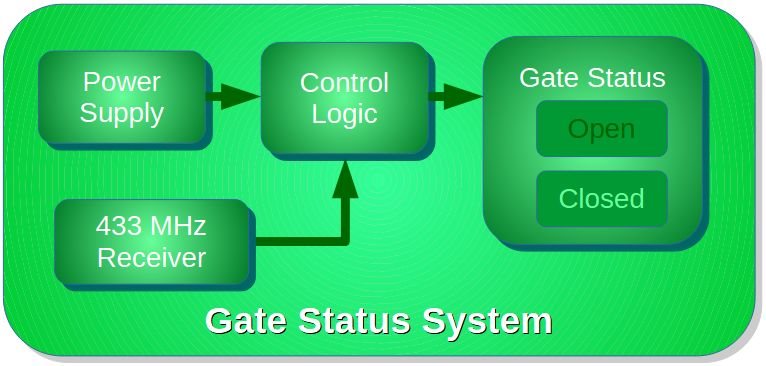
It will use an LED indicator.
The Son of a Sun Thermometer
This thermometer will also be powered by a solar cell which stores charge on a supercapacitor. The temperature will be sensed and displayed by an MSP430 MCU which will wake up periodically to update the temperature. The supercapacitor will collect charge from the solar cell while the MCU is asleep.
Here is a block diagram of the system:
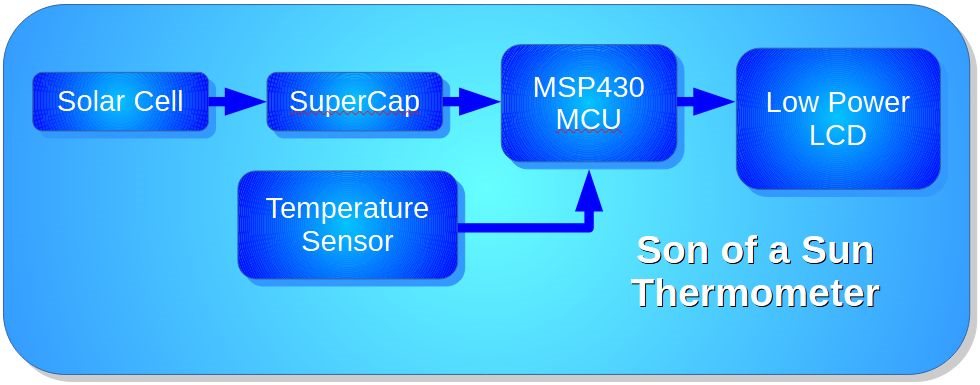
You've Got Mail
This application is a wireless monitor for when snail mail is delivered. It is similar to the Entergate system but the notification system needs to be reset when the mail is collected.
Here is a block diagrams showing both the monitor and the status indicator systems:

This one will need to be reasonably unobtrusive.
Megahertz Knock
This is a simple wireless doorbell, but it doesn't need any power on either end. Here are the block diagrams:
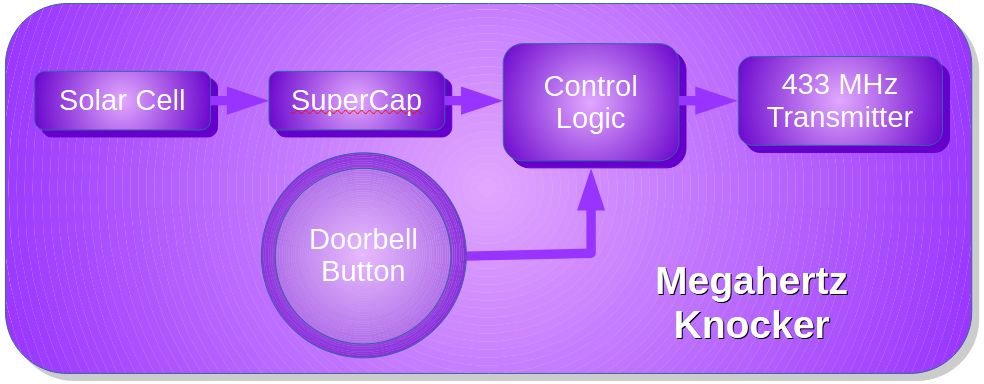

This system will use an audio system to play doorbell sounds or any other sounds when someone is at the door.
Early Warning System
This system will use a mm wave radar to detect people approaching the walkway and activate a transmitter to warn us someone is coming before they reach the doorbell.
Here are the block diagrams:
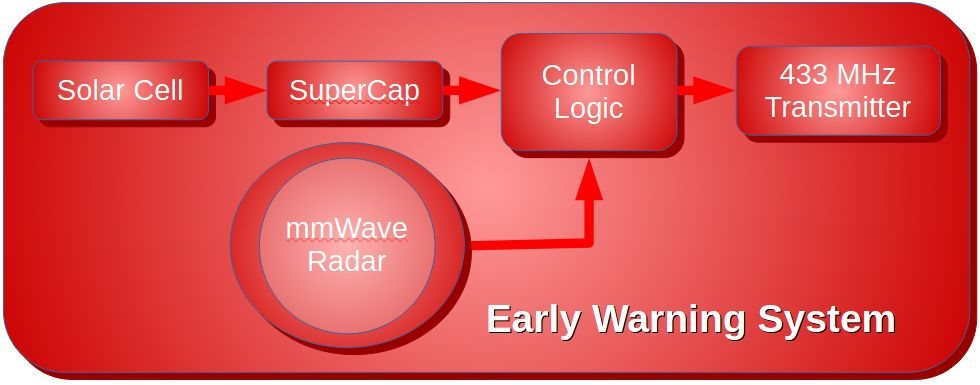

I'm not sure yet if the receiver system will use a supercapacitor, but the detector will - it uses a lot of power when it is active.
Introduction Summary
This blog outlined the main aspects of my plan to experiment with supercapacitors and applications they can be used to implement. It is quite ambitious to think about building half a dozen systems in the time period of the challenge, especially given the supply chain issues these days, but it is supposed to be a challenge after all. The Supercapacitor meter in particular is going to be an adventure. It is significantly more involved than I expected when I wrote my original proposal. The amount of work to create this blog alone is telling me this project is going to take a lot of hours.
Links
The SuperCap Magic Meter Shield
SuperCap Meter Shield Functional Test
SuperCap Magic Meter - Operational
SuperCap Magic Meter - Experimenting with Supercapacitors
Experimenting with Supercapacitors Design Challenge
Cornell Dubilier Supercapacitor Technical Guide
